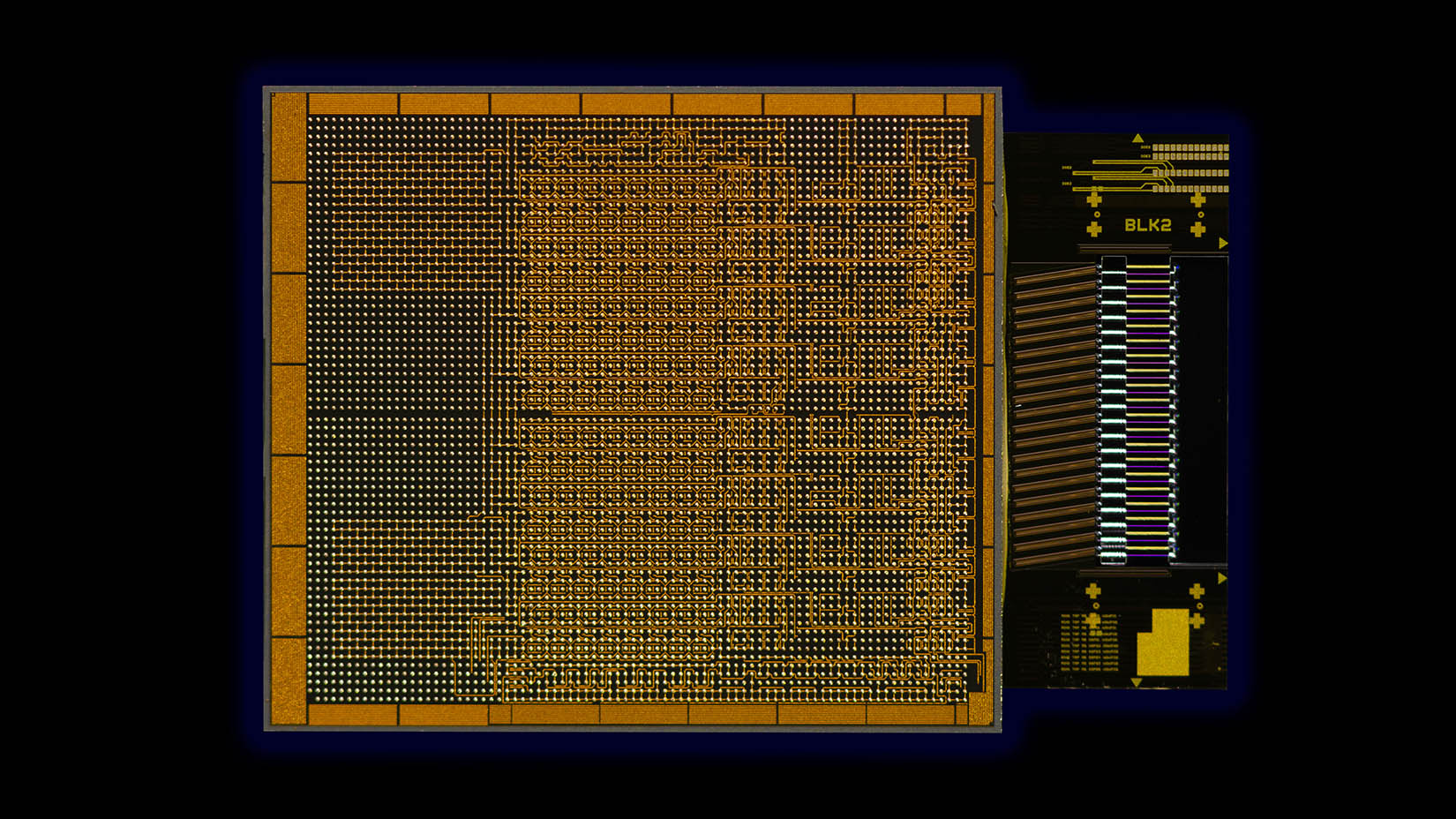2024-06-27 00:53:32
www.pcgamer.com

At the Optical Fiber Communications Conference (OFC) 2024, Intel gave us a particularly interesting glimpse at what could be the future of chip and interconnect design. The Optical Compute Interconnect (OCI) chiplet integrates a Photonics Integrated Circuit (PIC) with an electrical IC. The chiplet was packaged with an Intel CPU and shown running live data.
Intel believes this technology is a game changer as it meets increasing demand for higher bandwidth across greater distances, while using less power. Of course, the initial applications will be used for AI infrastructure and HPC environments, where scalability concerns across racks and clusters are becoming increasingly apparent in large scale deployments.
Intel’s press release included the following statement: “As an analogy, replacing electrical I/O with optical I/O in CPUs and GPUs to transfer data is like going from using horse-drawn carriages to distribute goods, limited in capacity and range, to using cars and trucks that can deliver much larger quantities of goods over much longer distances. This level of improved performance and energy cost is what optical I/O solutions like Intel’s OCI chiplet emerging bring to AI scaling.” That tells us where Intel believes the future of interconnect technology lies.
Although the OCI is a prototype, it already supports up to 4 terabits per second (Tbps) bidirectional data transfer across distances as far as 100 meters. Importantly, the technology is compatible with PCIe 5.0, making it relatively easy to integrate into existing PCIe compatible infrastructure.
In terms of power savings, Intel claims its solution is much more efficient, consuming only 5 pico-joules (pJ) per bit compared to pluggable optical transceiver modules at about 15 pJ/bit.
The OCI chiplet can be integrated with future CPUs, GPUs and SoCs. Should the technology reach the consumer space in the years ahead—and if it takes off in the enterprise space there’s little reason to doubt it will—then PCs in the years ahead could look very different.
Imagine being able to install a GPU that doesn’t require a PCIe slot. You could install it anywhere in a compatible case, and connect it to a motherboard via a cable without any loss of performance. That should lead to improved cooling performance and potentially simpler (and cheaper) motherboard designs.
Intel says it has developed a new silicon photonics fabrication process and it expects the technology to scale from the 4 Tbps range to tens of Tbps in the future. Chips with optical interconnects and glass substrates likely just got a step closer.
Exciting stuff!




























































![Dead Space: Downfall [Blu-ray]](https://techcratic.com/wp-content/uploads/2024/11/41LXWW-fC5L-360x180.jpg)






